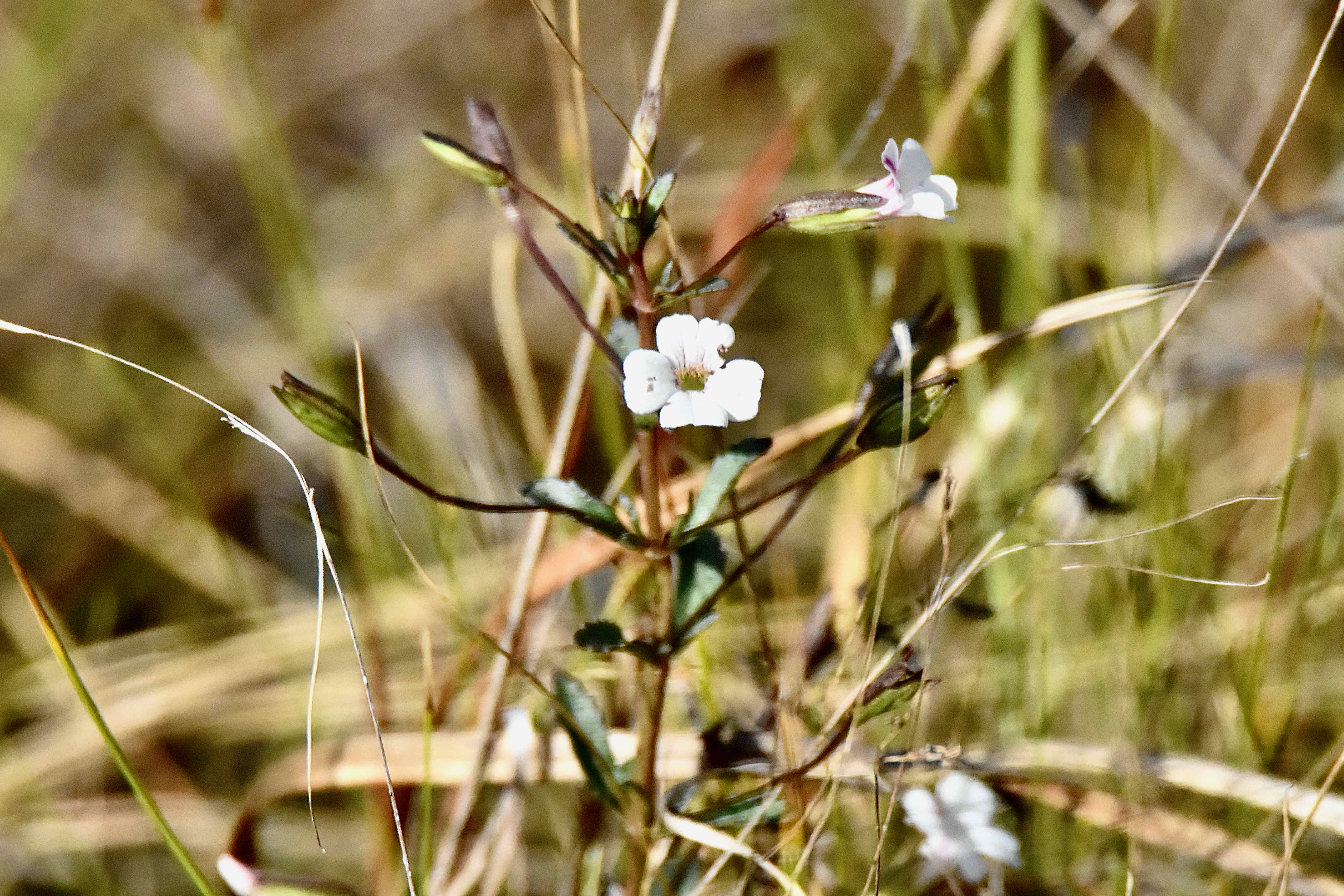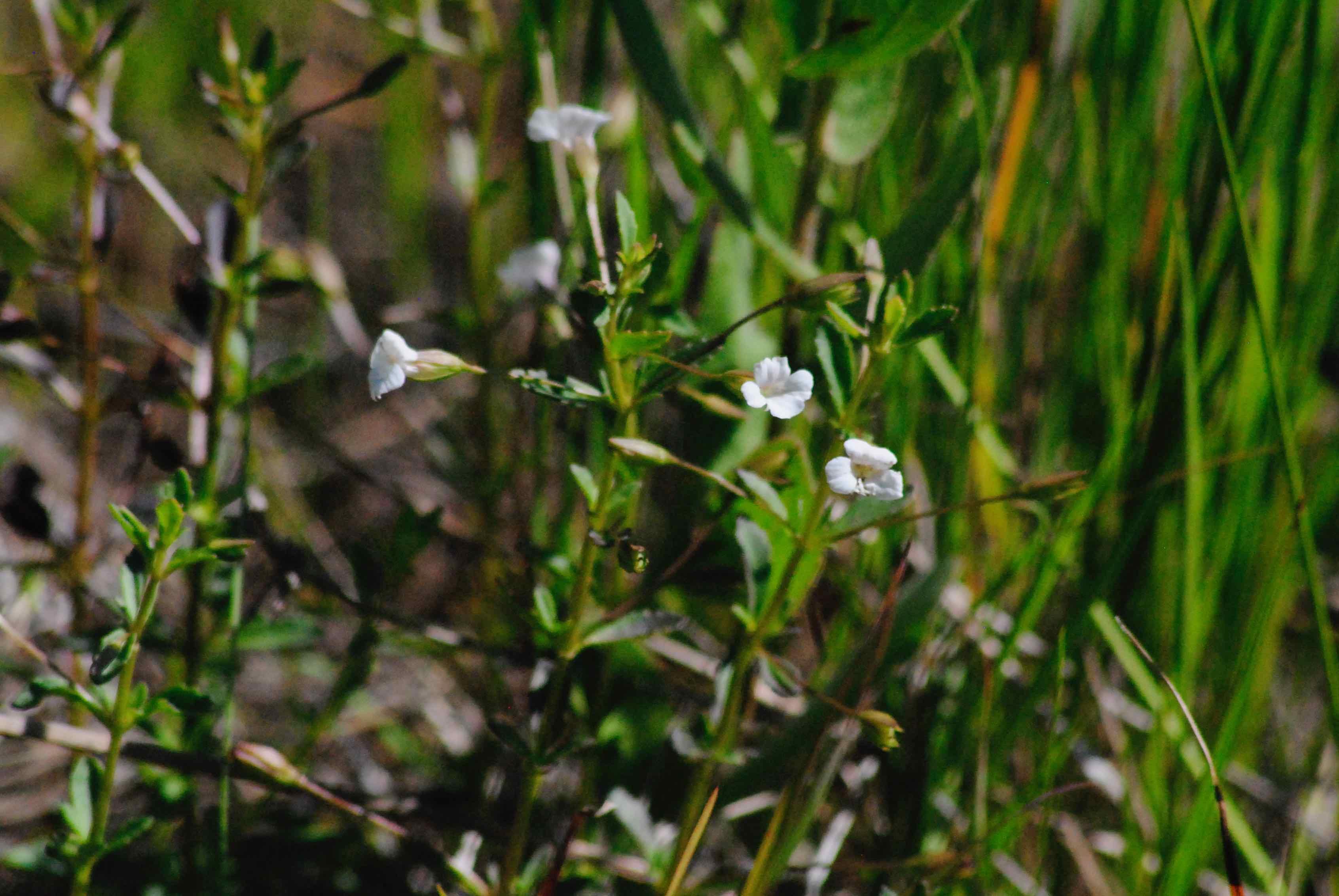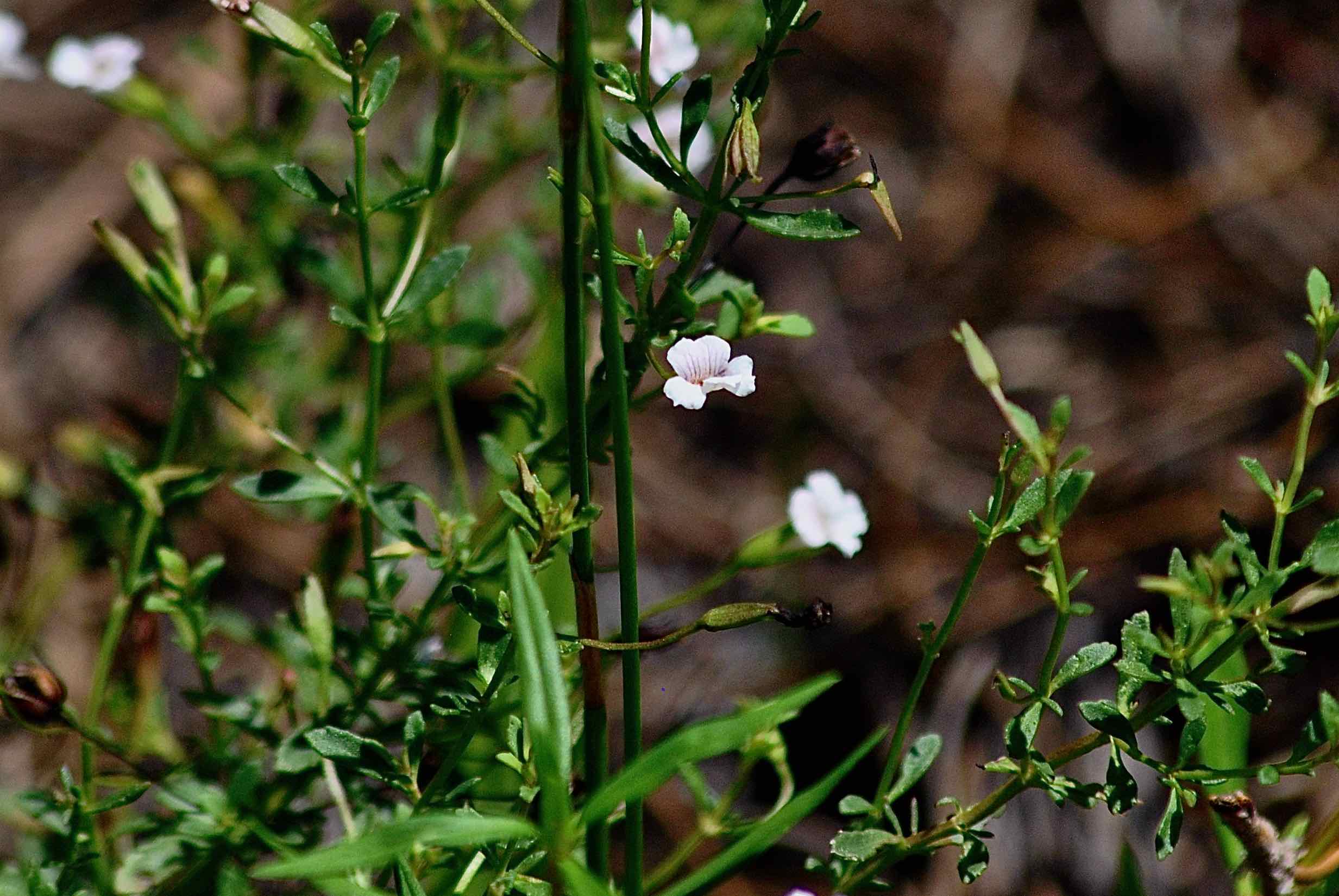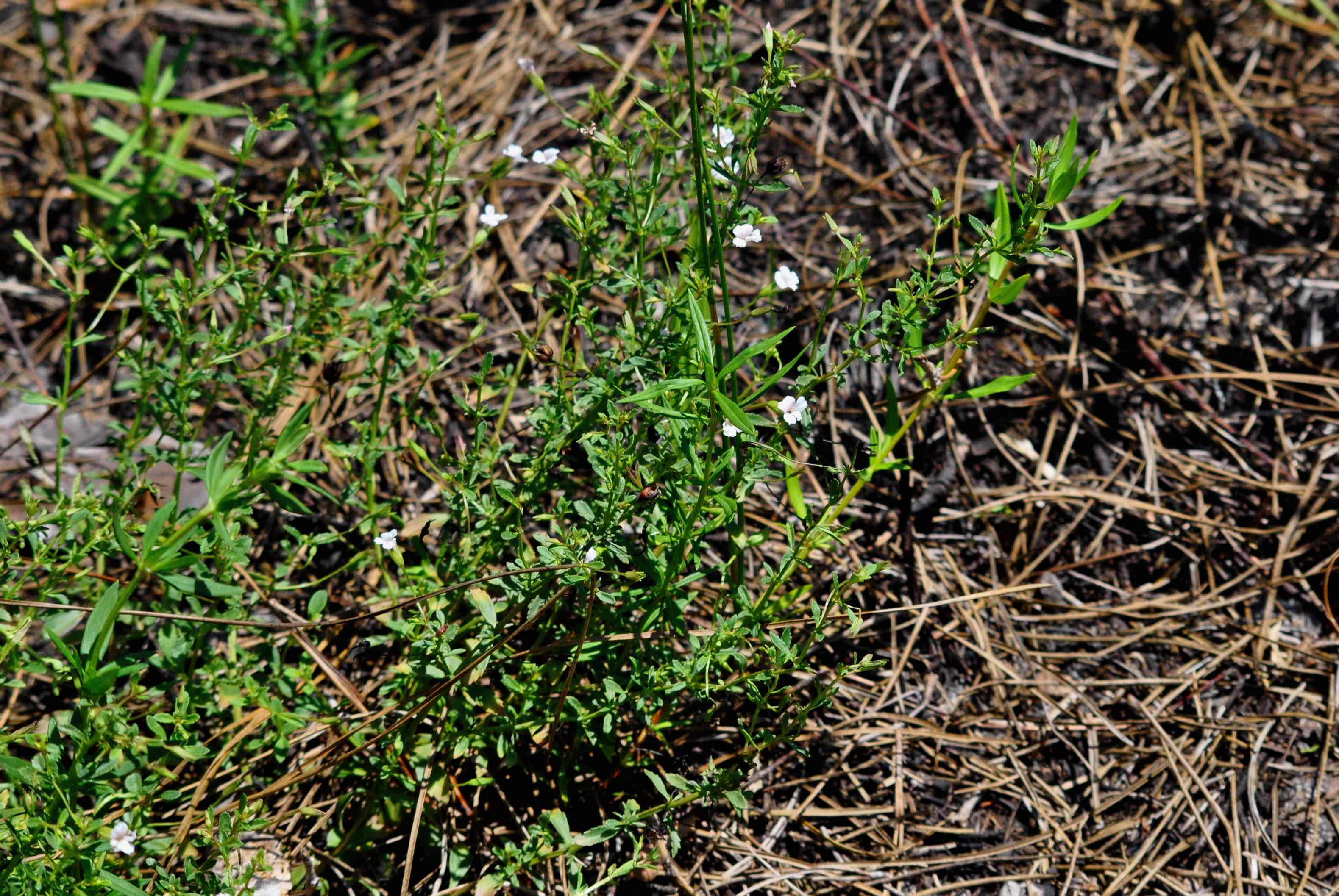
Axilflower, photographed at Cypress Creek South Natural Area, Jupiter, Palm Beach County, in March 2018.
Axilflower will get to you. It got to us. Scientifically known as Mecardonia acuminata, axilflower is small, its flowers mostly a plain white and easily ignored.
But it’s everywhere, or seemingly so. It keeps calling you and calling you, and eventually, it pulls you in to take a closer look. And what you see is a cool little plant.
Axilflower is a Florida native found in moist habitats throughout most of the Sunshine State. It’s also found throughout the southeastern United States as far west as Texas, Oklahoma and Kansas.
There are three subspecies of Axilflower found in Florida, with M acuminata subsp. acuminata being the most common, its range covering most of the northern tier of the state, including the Panhandle. M acuminata subsp. peninsularis is the one we see in South Florida, its range covering roughly the southern two-thirds of the Peninsula, plus the Keys. The third, M acuminata subsp. microphylla, is only found in Washington and Calhoun counties. Some sources say there are five subspecies altogether, but most only cite the three.
As we said, it is a small plant, rarely exceeding six inches tall, often sprawling along the ground. It is a perennial.
Axilflower blooms year round, peaking in late winter into spring. The flowers are small — a theme with this plant — white, tubular with sort of a rectangular shape to the mouth. The flower has five petals and five sepals, the outer part of the flower that covers the petals before it blooms. They’re borne singly at the end of a long “wand.”
The odd thing about it is the mouth, which has pink veins that lead into throat and give the flower a slight pink tinge. It’s common for flowers to be marked like that, a kind of signal for pollinators to land on and follow to find the sweet stuff inside the throat.
But in the case of axilflower, the signal is on the roof of the mouth, making the flower seemingly upside down! If you take a close look at the flower you’ll see the reason: that’s where the flower’s reproductive parts are. Yellow hairs, seen in the top photo if you take a close look, give it away. The arrangement isn't a problem for bees but it might deter certain pollinators, moths and butterflies in particular.
The leaves of axilflower are thick, with serrated edges and come to a sharp point at the tip. They are arranged opposite each other along the stem.
Axilflower likes moist habitats. It’s commonly found near swamps and forest edges. It sends out rhizomes, or underground stems, and can form large, dense colonies depending on where it’s growing.
It’s not a plant that can be found at most nurseries, even those that specialize in Florida native plants. But it can be useful as a ground cover along the banks of ponds and lakes, or even in a hanging basket, assuming it can be acquired.
The genus name, Mercardonia, honors Antonio Meca y Cardona, an 18th century Spaniard who was a patron of the Royal College of Surgery of Barcelona and a funder of botanical studies. The species name, acuminata, means sharp and refers to the tips of the leaves.
Another common name: blackening hedge hyssop, which refers to the plant’s tendency to turn black as it dries. It is a member of Plantaginaceae, the plantain family.



